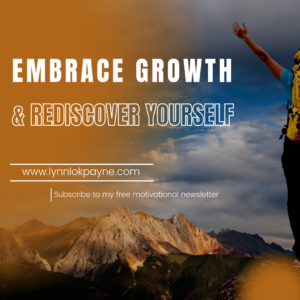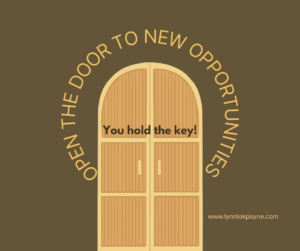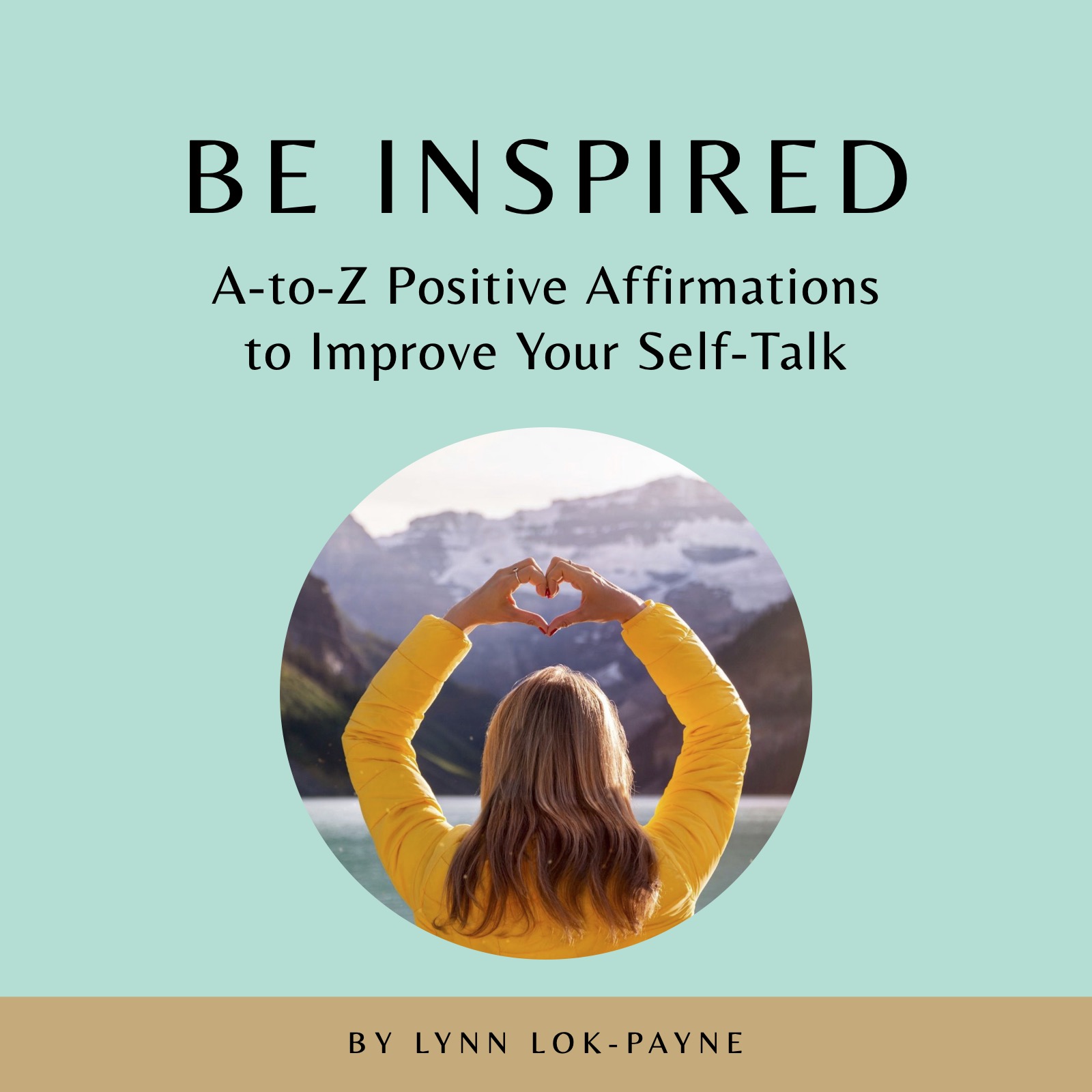
AFFIRMATION: I AM calm and tranquil.
In our busy world of work and responsibilities, we often get caught up in the “doing” and forget to just “be.” We are human BEings. Everyone has obligations, whether it is a job, running errands, or taking care of someone. But by taking a few minutes each day to be still, we would have lower stress levels, more serenity, and greater clarity. Better deci- sions are made when we are in a state of peace.
I use the practice of meditation to calm my mind and body. The word meditate has different interpretations, such as focusing on one’s breath, quieting thoughts, or cultivating spiritual awareness. Meditation is observing without judgment and can be used as a tool for reflection. It is dropping the thought critic and being the neutral observer. The goal is just to become present in the moment.
The goal of meditation isn’t to control your thoughts, it’s to stop letting them control you. — Anonymous
In the past, I had many assumptions about meditation. One was that I believed it was only to attain enlightenment. Secondly, I thought the only value was what happened during the session. I quickly found out that these were not true. The real reward for me is that it helps me stay more serene throughout the day. At one point during my meditation, it occurred to me to stop putting pressure and expectations on my meditative practice, and just BE STILL.
Being still does not have the same meaning or expectation as the word meditation. The two words, be and still, state exactly what we need to do—be still. Period. End of sentence.
What does it mean to be still? Spelling out the letter of these words, I wrote an acrostic poem for BE STILL:
Beautiful
Experience
Silencing
Thoughts
Inside (the mind)
Listening
Lovingly (from the heart)
Being still creates a clearer connection to our internal voice, allowing us to receive wisdom and understanding. My husband used the stillness of meditation after work to relieve daily stress and achieve tranquility.
The quieter you become, the more you can hear. — Anonymous
Be Still Practice
Being still through the practice of meditating is a tool that brings peace, presence, and insight. I believe there is no right or wrong way to meditate. We can sit or lie down. Sometimes I fall asleep during meditation, and that is okay. It just means my body needs to rest. Choose whatever position feels right, because if our bodies are uncomfortable, we will be reluctant to continue.
In my meditation practice, I start by sitting with my spine upright in a chair or on the floor, or laying down on my back. I close my eyes and put my awareness on my breath to slow its pace and relax my body as I become still. Sometimes I perform this in silence and other times I listen to instrumental music, nature sounds, or use a guided meditation.
Many times I falter during meditation because my mind won’t shut up! Buddhists call this “monkey mind,” meaning the mind is rest- less, unsettled, or uncontrollable. Thoughts skip from one to another like a monkey swinging from tree to tree. This constant chatter is normal—the mind will wander. Everyone has thoughts that creep in during meditation, we just don’t need to give them our full attention.
If a thought appears, trying to push it out does not work because it makes the thought expand, further disrupting peace. Just let it be. When the chatter begins, imagine thoughts are like clouds passing by and gently sailing away. Or just concentrate on your breathing. Counting your breaths can help reduce thoughts. These techniques help quiet the mind, even if it is only for a short time. The more I meditate, the quieter my thoughts become and the quicker I shift into a state of stillness. As with everything else, practice makes it easier.
I don’t believe meditation is about getting rid of all thoughts as much as it is about slowing them down. We cannot completely eliminate them, so become friends with thoughts. We can think Hello thought or Goodbye thought and then bring our awareness back to our breath. The point is to allow whatever occurs to happen without judging, analyzing, or feeling pressured to clear the mind.
If I want clarity on a situation, I set this intention first, and then still my mind. Sometimes I receive understanding or inspiration during my meditation, but mostly it shows up after my session. It is difficult to receive wisdom if my to-do list or other thoughts keep appearing. Let go and allow inspiration to flow through you. Connection to the inner self takes place in the silent space between thoughts.
Let us be silent, so we may hear the whisper of the gods. — Ralph Waldo Emerson, American poet, essayist, philosopher
I used to believe the benefit of meditation was what I received during the process. But I realized the significance was how my life changed outside of my practice. Meditation makes me feel more grounded, centered, and calm. This state can last throughout the day allowing me to make more beneficial choices. Struggles that seem heavy before meditation appear less difficult afterward.
I am not always successful in stilling my mind. When this happens, I direct my attention to my breath or heart to bring me back to center. There are times when, not even a few seconds later, I have to start the whole process over again. I no longer beat myself up when this happens. Recognition of the thought is a step toward being still. We cannot be mindful all the time. But the more we catch ourselves not being in the here and now, the more we actually will be in the present. Everybody has their own way to Be Still. Do whatever feels right.
There are many ways to become still. One way is to keep your eyes open and concentrate on something, such as a candle flame or an object. The goal is the same—to be aware of this moment. For some people, open-eye meditation lessens the internal noise more than when their eyes are closed. Also, complete silence is not needed to meditate. I have seen people practice in an airport. It is about not letting the distractions bother you.
After meditating, stay still for a few minutes to bring awareness back to the body and mind. For me, it helps to open my eyes and slowly look around the room. Once I’ve done this, I gently start moving my arms and legs to awaken my body. I find that sometimes I feel a bit off balance after a meditation and need to sit still and slowly move to find my stability before I proceed with the rest of my day. There are many resources online, books, apps, podcasts, groups, or practitioners that you can explore to find one that feels right for you. Remember there are many ways to be still.
If you have experienced trauma, consult a professional mental health expert before meditating. David Treleaven states in The Science of Psychotherapy, “For people who’ve experienced trauma, mindfulness meditation can actually end up exacerbating symptoms of traumatic stress.”¹ It can bring up old wounds and feelings that may need professional help. Treleaven goes on to state, “Mindfulness practice doesn’t need to work for everyone, but I’ve become convinced that certain modifications to meditation can support survivors, at the very least ensuring that they are not re-traumatizing themselves in practice.”²
Belly Breathing
The way we breathe can help our practice. Before becoming still, take a few deep breaths to relax using “belly breath,” a technique I learned in voice lessons. To find if one is a chest breather (most people are) or an abdominal breather, put one hand on the chest and the other on the stomach. Where you place your hands is where your awareness is directed. Now inhale. Did the chest or belly rise? If your belly rose, you are breathing from the diaphragm and taking in full breaths. If your chest rose, you are not breathing in fully. This can cause the body stress since less air is getting in and out of the lungs.
Harvard Health Publishing describes in “Relaxation Techniques: Breath Control Helps Quell Errant Stress Response” states, “Shallow breathing limits the diaphragm’s range of motion. The lowest part of the lungs doesn’t get a full share of oxygenated air. That can make us feel short of breath and anxious. Deep abdominal breathing encourages full oxygen exchange—that is, the beneficial trade of incoming oxygen for outgoing carbon dioxide. Not surprisingly, it can slow the heartbeat and lower or stabilize blood pressure.”³ I believe this is essential to a good meditation experience.
Babies are natural belly breathers. With a little practice, I too learned this method. I noticed that my energy levels stay up during exercise and I recover more quickly when I breathe from the abdomen. Following one’s breath is also an excellent way to slow down the mind when trying to meditate or go to sleep. If I have trouble quieting down my mind when I go to bed, I think the word peace or sleep on my exhale. It is my sleep mantra.
Health Benefits
Many health benefits can be gained by a regular meditation practice, including decreased levels of stress and anxiety, better sleep, and increased production of anti-aging hormones. Dr. Thiago Freire, anti-aging medicine specialist, describes “Yes, meditation can slow the aging process. You don’t even need to meditate for long every day, and other techniques, such as practicing yoga and mindfulness, can also help.”4 Dr. Freire goes on to state that meditation improves attention span and concentration levels, reduces memory loss and blood pressure, and increases happiness and self-awareness so you will have a better understanding of who you are.5
An indicator of stress is the length of our telomeres. “Telomeres are protein caps on the end of each chromosome in your body. During cell division the chromosome replicates, a process that shortens the telomeres. When telomeres become too short, the cell can no longer divide and replicate. This increases aging in the body and is associated with age-related diseases,”6 states Dr. Freire. One of the best studies of how stress affects telomeres comes from research scientists Elizabeth
Blackburn and Elissa Epel who conducted a study on aging at the University of California, San Francisco, and published their findings in a book, The Telomere Effect. They studied the stress levels of mothers with children who were chronically sick versus mothers whose children were healthy. The stressed mothers had telomeres similar to ones of women ten years older. Blackburn, along with two other colleagues, received a Noble Prize in 2009 for their work on telomeres.
Stress causes inflammation, and inflammation is the beginning of disease. Carnegie Mellon University’s Sheldon Cohen states, “When under stress, cells of the immune system are unable to respond to hormonal control, and consequently, produce levels of inflammation that promote disease.”7 By practicing meditation, we are helping to release tension, which allows our cells to promote healing. With so many health benefits, why not try meditation?
Aim for a couple minutes of stillness for a few days. Then add a little more time with the goal of being still for about fifteen minutes. Even one minute a day is helpful. It is more beneficial to be still for one minute a day than seven minutes one day a week. When our minds and bodies are more tranquil, we function better and it is easier to find positive emotions such as gratitude and happiness.
Meditative Movement
We do not have to be seated in a lotus position to meditate. It is about moving with awareness. There are many forms of meditative movements such as, yoga, Tai Chi, Qi Gong, or even walking. Conscious awareness of the body’s motion, combined with a relaxed breath, is all that is needed.
Practicing an action that helps us to relax, such as painting, sculpting, or walking, can foster a state of tranquility and allow us to get lost in the moment. In this state, brain waves slow down, making it possible for us to tap into a flow of ideas and creativity. Incredible inspiration and wisdom can come from these relaxed states of mind because we are connecting to our inner awareness. And if you can, practice your activities outside for more serenity. Let nature be your muse.
Outdoor hobbies, such as gardening, hiking, or fly-fishing can be mindful. I have several friends who find fishing to be a form of meditative movement because it takes their entire concentration to deliver a good cast. Listening to the gentle sounds of a river with few people around is a great way to decompress. Kite-flying can help create a similar state of serenity. It is a great way to take the mind off everything else and focus on the current activity.
The simple act of walking with awareness is a wonderful way to start or end the day, and one of my favorite activities to do is a walking meditation. Nature offers less distractions and is filled with music—the sound of rustling leaves as the wind sweeps through the trees, bees buzzing from flower to flower, or birds singing in the morning or evening sun. Walking clears my head as I become aware of this very moment. Take time during the day to move while focusing on something that brings in happiness. Center into the tranquil movement, take in a deep breath, release, and feel harmony between the body and mind. A slow, meditative walk allows our awareness to connect and ground with the earth. This is called grounding or earthing. In this peaceful state we become conscious of the here and now. If possible,
get off the concrete sidewalk and walk barefoot on grass, sand, or dirt. When we connect directly to the earth, our bodies absorb its negatively-charged electrons. Emerging research shows that contact with the earth may be effective in lowering inflammation, pain, chronic stress, and helping with sleep and other health ailments.8 Everyone’s body reacts differently so do your own research. For me, walking barefoot on the earth or lying in the sand relaxes me and helps me enter at state of peace.
MediTEAtion
If quieting the mind seems difficult, try my practice of mediTEAtion. MediTEAtion is a form of meditation because it can help us to unwind and relish in the moment. When I perform my mediTEAtion while looking at nature, it brings me more tranquility, and I enter into a place of deep gratitude.
This technique helps me to unwind—make a cup of hot tea and sit outside or by a window. Take in a deep breath, release, then sip the tea slowly and savor the taste. Use all the senses in this experience. Look at the color of the tea. Is it black, green, or white tea? Then smell its fragrance. What does it smell like—earthy, flowery, spicy? Taste and feel the warm essence of the tea as it glides over the tongue and down the back of the throat. What is the taste—minty, sweet, grassy? How does the warmth of the cup feel in your hands—soothing, calming, healing? Are there any sounds to hear—rain falling on the roof, birds singing, children laughing? Enjoy this “me” time.
Drink your tea slowly and reverently, as if it is the axis on which the world earth revolves —slowly, evenly, without rushing toward the future. Live the actual moment. Only this moment is life. — Thich Nhat Hanh, Vietnamese Zen monk, spiritual leader, poet, peace activist
Tea can be peacefully energizing without a strong caffeine rush. It makes me calm and awake at the same time. Creating a morning tea routine can start our day off in a harmonious state. Or make it an after- noon ritual. And sometimes I will add honey or dip an almond cookie into my tea for a special treat. Instead of Seize the Day, TEAze the Day! Use a special teacup or mug for mediTEAtion. Utilizing a dedicated cup signals the brain that it is teatime. This tea ceremony can announce that we are giving ourselves a special gift—one of self-love. What follows is a teaquility state of mind. This is the tranquil state induced by sipping tea. And lighting a candle helps to make the experience more serene.
Drinking tea may be beneficial for health as well. WebMD’s article, “Types of Tea and Their Health Benefits” states, “Studies have found that some teas may help with cancer, heart disease, and diabetes; encourage weight loss; lower cholesterol; and bring about mental alertness. Tea also appears to have antimicrobial qualities.”9
It is important to find simple, pleasurable ways to soothe our- selves. MediTEAtion is a special ceremony to help quiet the mind and become present in the moment. The body will feel the warmth and start to relax. It is like getting an internal hug. Savor mediTEAtion. It is good for the mind, body, and soul.
Finding Peace in Being Still
Although peace can be found when we learn to be still, I know from my own experience that being still can be very hard to accomplish. At first, I wondered if I was wasting time in the processes I’ve described when I had many other things to do. It was difficult to get into the habit of seeking stillness, but I found that I felt more at peace when I did. In time, I discovered it gave me greater clarity and energy to pursue other tasks in my life. I know I make better choices when I use these methods because I am more connected to my heart—my soul’s true center.
I was having difficulty finding a song to go with this chapter’s message, when suddenly an Eagles song, “Learn to Be Still” popped into my mind. How could I not remember this song? It was written by my favorite band of all time—Eagles, with their amazing harmony. I give thanks for the inspiration of this song. It’s a confirmation from above that I am on the right track!
Photo by Melissa Askew on Unsplash
Stop Neglecting Yourself: The Importance of Me Time for a Happier You
- David Treleaven, “Is Mindfulness Safe For Trauma Survivors,” The Science of Psychotherapy, January 29, 2018, https://www.thescienceofpsycho- therapy.com/is-mindfulness-safe-for-trauma-survivors/#:~:text=For%20 people%20who’ve%20experienced,exacerbating%20symptoms%20 of%20traumatic%20stress.&text=Mindfulness%20can%20enhance%20 present%2Dmoment,skills%20that%20support%20trauma%20recovery.
- Ibid.
- “Relaxation Techniques: Breath Control Helps Quell Errant Stress Response,” Harvard Health Publishing, Harvard Health Medical School, January 2015; last modified April 13, 2018, https://www.health.harvard.
edu/mind-and-mood/relaxation-techniques-breath-control-helps-quell- errant-stress-response.
- Thiago Freire, “The Anti-Aging Impact Of Meditation,” Wall Street Inter- national Magazine, January 19, 2018, https://wsimag.com/wellness/35256- the-anti-aging-impact-of-meditation.
- Ibid.
- Ibid.
- Carnegie Mellon University, “How Stress Influence Disease: Study Re- veals Inflammation As Culprit,” Science Daily, April 2, 2012, https://www. sciencedaily.com/releases/2012/04/120402162546.htm.
- Gaétan Chevalier, et al., “Earthing: Health Implications of Reconnecting the Human Body to the Earth’s Surface Electrons,” US National Library of Medicine, National Institutes of Health, January 12, 2012, https://www. ncbi.nlm.nih.gov/pmc/articles/PMC3265077/#B16.
- Julie Edgar, “Types Of Tea And Their Benefits,” WebMD, March 20, 2009, https://www.webmd.com/diet/features/tea-types-and-their-health-bene– fits#2.







